Today, we’re delving into the world of potatoes. Not just any spuds, mind you, but home-grown, dirt-under-your-fingernails, proud-as-punch potatoes. Growing your own potatoes can be a rewarding experience. There’s something magical about digging into the soil and pulling out a potato you’ve grown yourself. But, like any good thing, it takes time. Understanding the potato growing timeline is crucial to ensure you’re not left scratching your head, wondering why your potatoes are taking their sweet time to sprout.
How many days to grow potatoes: They have varying growth durations based on their type and desired size. Small new potatoes can be ready for harvest as early as 60 days after planting. However, for full-sized potatoes, it typically takes between 80 to 100 days to reach maturity. Some specialty and larger potato varieties might even require up to 120 days. It’s essential to note that specific growth times can be influenced by the potato variety and growing conditions.
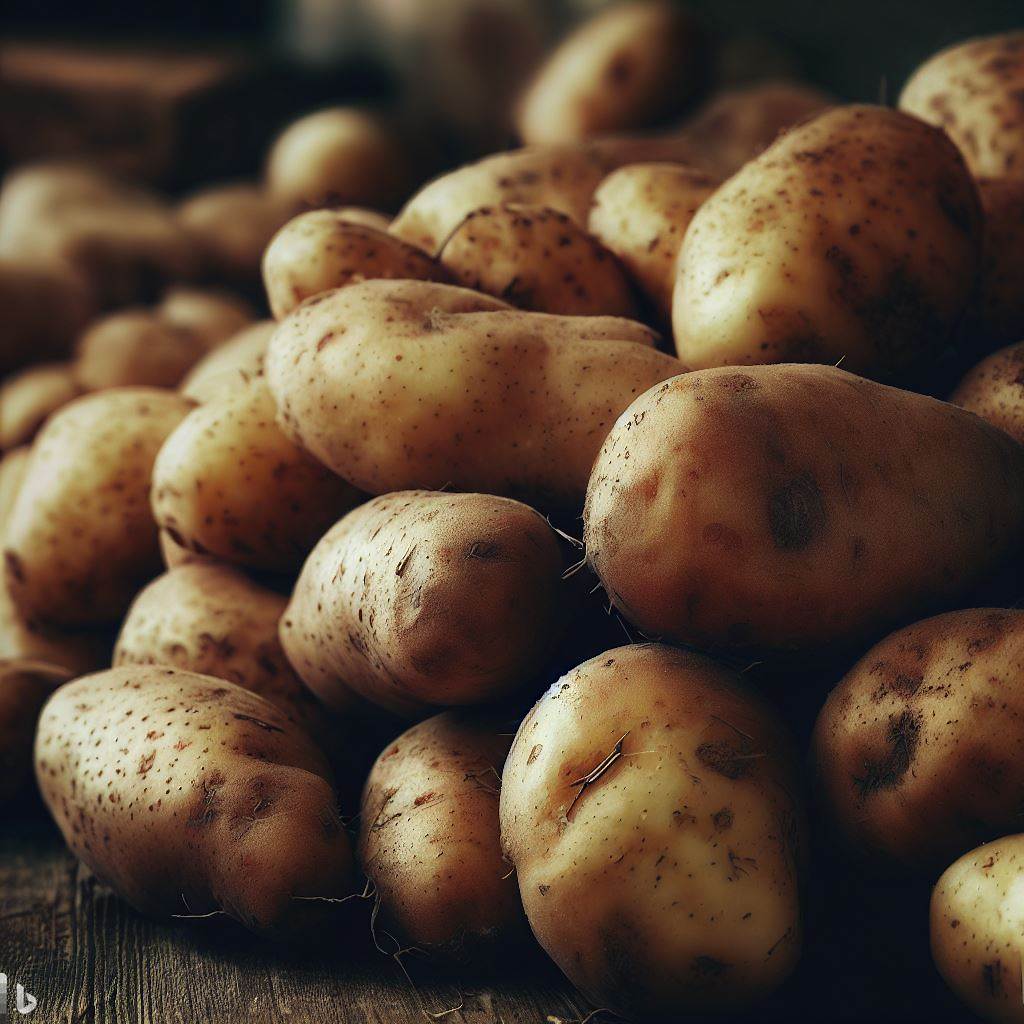
🥔 Spud Suggestions: Patience is a virtue, especially in gardening. Remember, good things come to those who wait (and water and weed). 🥔
In this comprehensive guide, we’ll cover everything from the different potato varieties and how they affect the growing time, to the stages of potato growth, and even how to care for your potatoes. We’ll answer common questions like “How long do potatoes take to grow?” and “How do I know when my potatoes are ready to harvest?”
So, whether you’re a seasoned gardener or just starting out, stick around. By the end of this article, you’ll be a bona fide potato-growing expert. Now, let’s dig in!
Understanding Potato Varieties
Just as there are many fish in the sea, there are many spuds in the soil. Understanding the different potato varieties is the first step towards successful potato gardening. Each variety has its unique characteristics, including the time it takes to grow. Let’s dig a little deeper into this.
The Spud Spectrum
Potatoes come in a variety of shapes, sizes, and colors. From the small, round new potatoes to the large, oblong russets, there’s a potato for every dish and every gardener. Here are a few popular varieties:
- Russet Potatoes: Known for their brown skin and starchy white flesh, russets are the classic baking potato. They take about 90-110 days to reach maturity.
- Yukon Gold Potatoes: These potatoes have a golden skin and yellow flesh. They’re versatile and great for mashing, roasting, or grilling. Yukon Golds typically mature in about 80-95 days.
- Red Potatoes: With their red skin and white flesh, red potatoes are a favorite for boiling and making salads. They’re usually ready to harvest in about 70-90 days.
🥔 Spud Suggestions: The color of a potato’s skin or flesh doesn’t indicate its maturity. It’s all about the size and firmness of the potato. 🥔
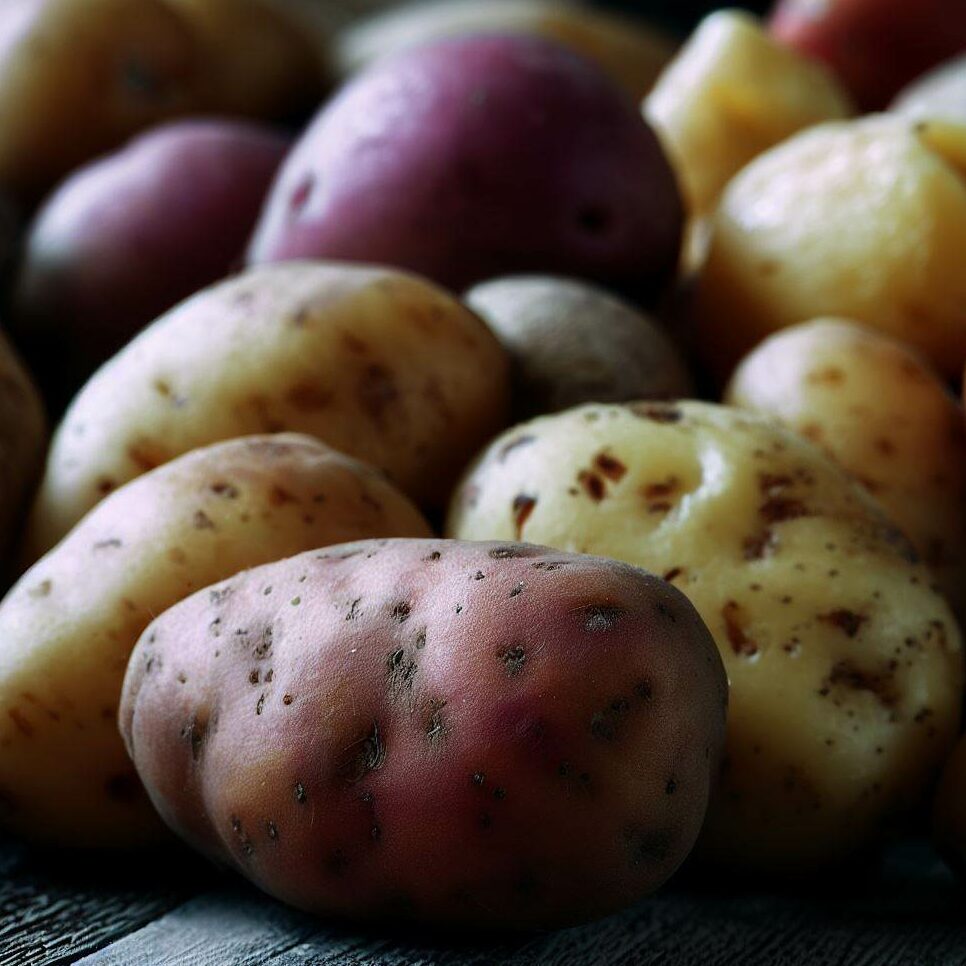
How Variety Affects Growing Time
The type of potato you choose to grow will significantly impact the time it takes from planting to harvest. Early-season potatoes, like the red varieties, can be ready in as little as 70 days, while late-season varieties, like some russets, can take over 100 days. So, when planning your potato garden, consider how long you’re willing to wait for your spuds.
🥔 Spud Suggestions: If you’re an impatient gardener, try growing an early-season variety. If you’re more of the slow and steady type, a late-season variety might be just your speed. 🥔
Remember, the key to growing potatoes (or anything, really) is understanding your plants. The more you know about the different potato varieties and their growing times, the better equipped you’ll be to grow a bountiful potato harvest. So, choose your spuds wisely.
The Potato Growing Process
Now that we’ve covered the different potato varieties and how they affect the growing time, let’s delve into the actual process of growing potatoes. From planting to harvest, each stage of potato growth is a step towards a bountiful harvest. So, what are these stages, you ask? Let’s dig in!
Stages of Potato Growth
Growing potatoes is a journey, and like any good journey, it has several stages. Here’s a step-by-step guide to the stages of potato growth:
- Planting: This is where it all begins. Plant your seed potatoes in a sunny spot with well-drained soil. Make sure the eyes (the little sprouts on the potato) are facing up.
- Sprouting: In about 2 weeks, you’ll start to see green shoots emerging from the soil. This is a sign that your potatoes are sprouting and starting to grow.
- Vegetative Growth: Over the next several weeks, the plants will continue to grow and develop. They’ll produce more leaves and begin to flower.
- Tuber Formation: After the plants flower, they’ll start to produce tubers. These are the actual potatoes, and they grow underground.
- Maturation: The potatoes will continue to grow until they reach their full size. Once the plants start to die back, it’s a sign that the potatoes are mature and ready to harvest.
🥔 Spud Suggestions: The “eyes” of a potato are actually the growth points where new plants can sprout. 🥔
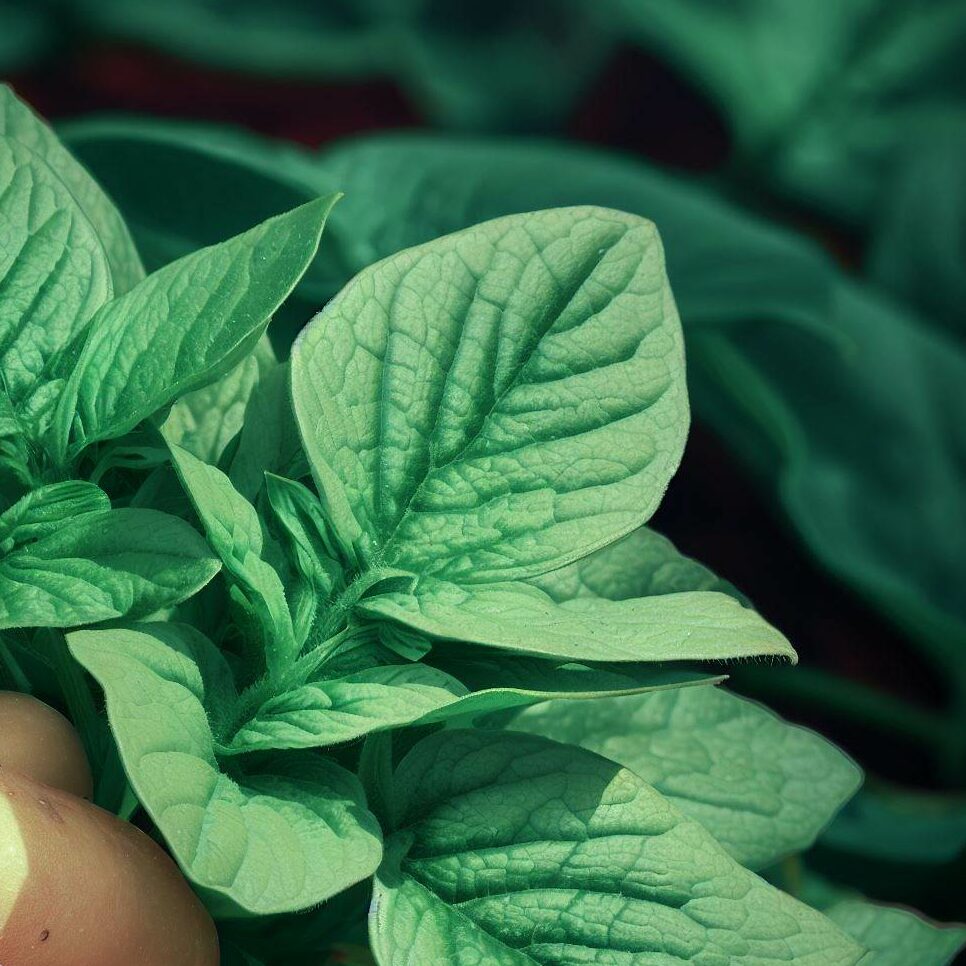
Factors Affecting Potato Growth
While the stages of potato growth are pretty straightforward, there are several factors that can affect how your potatoes grow. Let’s take a look at a few of them:
- Climate: Potatoes prefer a cool climate, but they can tolerate a wide range of temperatures. However, they don’t do well in extreme heat or cold.
- Soil: Potatoes need well-drained soil to prevent rot. They also prefer slightly acidic soil.
- Water: Like all plants, potatoes need water to grow. However, too much water can cause the potatoes to rot, so it’s important to water them just enough to keep the soil moist.
- Care: Regular weeding, hilling (piling soil around the base of the plant), and pest control can help your potatoes grow healthy and strong.
🥔 Spud Suggestions: Hilling potatoes can help prevent sun exposure, which can turn your potatoes green and make them taste bitter. 🥔
Understanding the potato growing process and the factors that affect it can help you grow a successful potato garden. Remember, patience is key. With a little care and attention, you’ll be harvesting your own home-grown potatoes in no time.
How Long Does It Take to Grow Potatoes?
Now that we’ve covered the stages of potato growth and the factors that can affect it, let’s get to the root of the matter: How long do potatoes take to grow? Whether you’re growing new potatoes or full-sized ones, the timeline can vary. Let’s dig into the details.
New Potatoes vs. Full-Sized Potatoes
The time it takes for potatoes to grow can depend on whether you’re growing new potatoes or full-sized ones. Here’s a quick breakdown:
- New Potatoes: These are young potatoes that haven’t reached full maturity. They’re small, tender, and can be harvested as early as 8 weeks or 60 days after planting.
- Full-Sized Potatoes: These are mature potatoes that have reached their full size. They typically take about 80-100 days to reach maturity, although some varieties can take up to 120 days.
🥔 Spud Suggestions: New potatoes are great for boiling, roasting, or using in salads, while full-sized potatoes are perfect for baking, mashing, or frying. 🥔
What Potato Takes the Longest to Grow?
If you’re wondering what potato takes the longest to grow, that would be the late-season varieties. These potatoes, which include many russet and purple varieties, can take at least 110 days to harvest. So, if you’re in a hurry to harvest, these might not be the best choice for you.
Why Are My Potatoes Taking So Long to Grow?
If your potatoes are taking longer than expected to grow, there could be a few reasons for this. It could be due to unfavorable growing conditions, like poor soil, lack of water, or extreme temperatures. It could also be due to pests or diseases. If your potatoes are taking their sweet time, it might be worth checking these factors and making any necessary adjustments.
🥔 Spud Suggestions: Patience is key when growing potatoes. Remember, good things come to those who wait! 🥔
So, there you have it. While the exact time it takes to grow potatoes can vary, you can expect to be harvesting your spuds anywhere from 60 to 120 days after planting.
Planting and Care for Potatoes
Now that we’ve discussed the timeline for growing potatoes, let’s delve into the practical aspects of planting and caring for your spuds. Whether you’re a seasoned gardener or a green thumb in the making, these tips will help you cultivate a bountiful potato harvest.
How to Plant Potatoes
Planting potatoes is a straightforward process, but there are a few key steps to follow:
- Choose Your Potatoes: Start with certified seed potatoes, which are disease-free and ready for planting. You can find these at your local garden center or online.
- Prepare the Potatoes: If your seed potatoes are large, cut them into pieces, each with at least one or two “eyes” or growth points. Let the cut pieces dry for a day or two before planting.
- Prepare the Soil: Potatoes prefer well-drained, slightly acidic soil. Add compost or well-rotted manure to enrich the soil.
- Plant the Potatoes: Dig a trench about 4 inches deep. Place the potato pieces cut-side down, about 12 inches apart, and cover them with soil.
🥔 Spud Suggestions: Planting potatoes in raised beds or containers can help improve drainage and prevent waterlogging. 🥔
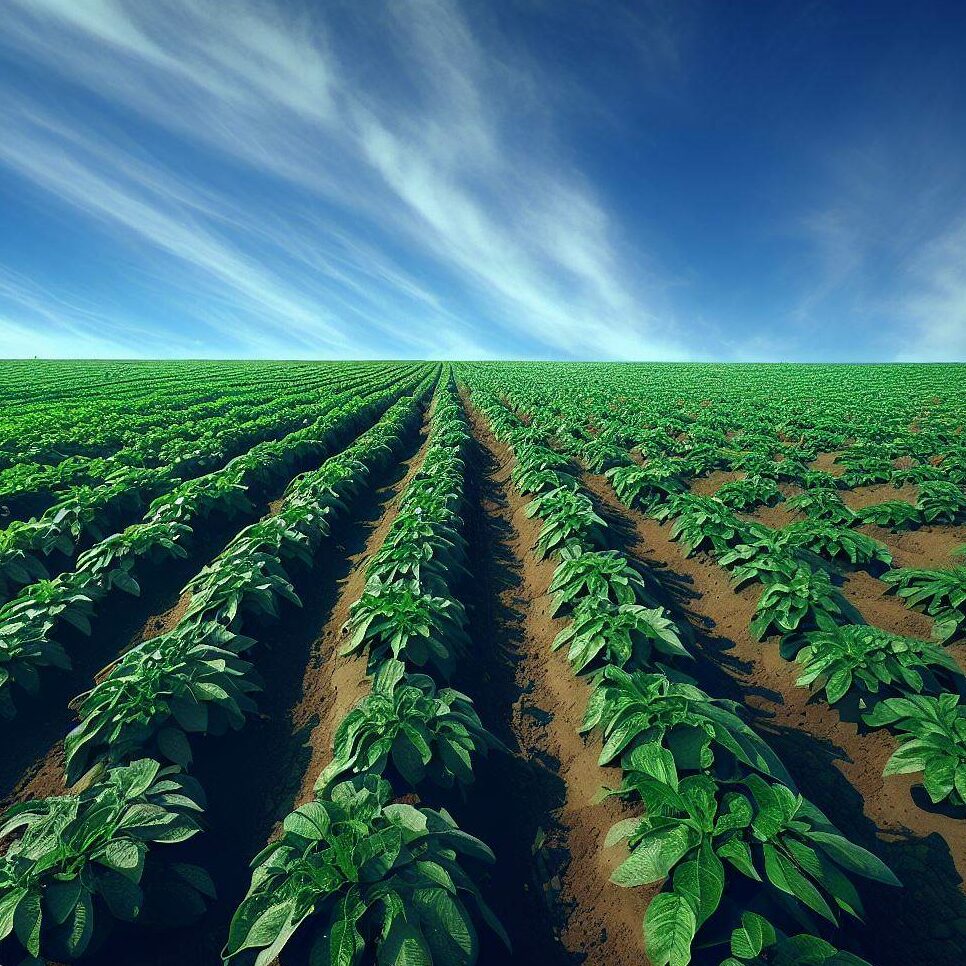
When to Plant Potatoes
The best time to plant potatoes is in early spring, as soon as the soil is workable. However, if you missed the spring planting window, don’t worry. You can also plant potatoes in late summer for a fall harvest. Just keep in mind that potatoes need about 2-4 months of cool weather to grow, so plan your planting accordingly.
Potato Care Tips
Taking care of your potatoes involves regular watering, hilling, and keeping an eye out for pests and diseases. Here are some tips:
- Watering: Keep the soil consistently moist, but not waterlogged. Overwatering can cause the potatoes to rot.
- Hilling: As the potato plants grow, mound soil around the base of the plants. This helps protect the developing potatoes from sunlight, which can turn them green and bitter.
- Pest and Disease Control: Watch out for common potato pests like Colorado potato beetles and diseases like potato blight. If you spot any problems, treat them promptly to prevent them from spreading.
🥔 Spud Suggestions: Rotate your potato crop each year to help prevent diseases and maintain soil health. 🥔
With these planting and care tips, you’ll be well on your way to growing a successful potato crop.
Harvesting Potatoes
After months of nurturing your potato plants, it’s finally time for the most rewarding part of the process – the harvest! But how do you know when your potatoes are ready to be harvested? Let’s dig into the details.
Signs Your Potatoes Are Ready to Harvest
Knowing when to harvest your potatoes can feel like a bit of a guessing game, but there are a few telltale signs that your spuds are ready to leave the ground:
- Plant Foliage: When the foliage of the potato plant starts to yellow and die back, it’s a good sign that the potatoes are mature. This usually happens about 2-4 weeks after the plant has finished flowering.
- Skin Firmness: You can do a quick test to check if your potatoes are ready. Dig up a small potato and rub the skin with your fingers. If the skin rubs off easily, the potatoes need more time. If the skin is firm and doesn’t rub off, they’re ready to harvest.
🥔 Spud Suggestions: For new potatoes, which are smaller and more tender, you can start harvesting a few weeks after the plants have finished flowering.
How to Harvest Potatoes
Harvesting potatoes is a simple process, but a few tips can help ensure you don’t damage your precious spuds in the process:
- Choose the Right Time: It’s best to harvest potatoes on a dry day. If the soil is too wet, the potatoes may rot.
- Use the Right Tools: A garden fork is the best tool for harvesting potatoes. It’s less likely to accidentally slice into the potatoes than a spade or shovel.
- Be Gentle: Dig around the outside of the plant and lift the potatoes out of the ground gently to avoid bruising them.
🥔 Spud Suggestions: After harvesting, let your potatoes dry for a few hours before storing them. This helps the skin toughen up and extends their storage life. 🥔
With these tips, you’ll be well-equipped to harvest your potato crop and enjoy the fruits of your labor.
Special Section: Growing Potatoes in a Bucket
For those with limited garden space, don’t fret! You can still enjoy homegrown spuds by growing potatoes in a bucket. Let’s quickly dig into how you can do this.
- Choose a Suitable Bucket: A 5-gallon bucket works well. Ensure it has adequate drainage holes.
- Prepare Your Potatoes: Use seed potatoes and cut them into chunks, each with at least one ‘eye’.
- Plant and Care: Place the potato chunks in the bucket, cover with soil, and water regularly.
Growing potatoes in a bucket typically takes about 10-12 weeks. It’s a fun and space-saving way to grow your own potatoes!
🥔 Spud Suggestions: You can stack multiple buckets to create a ‘potato tower’, which can yield an even larger crop. 🥔
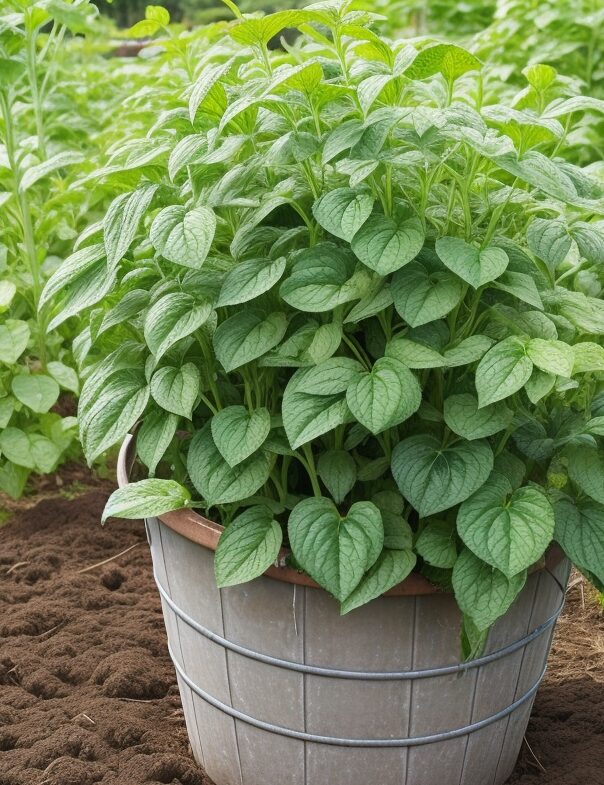
Conclusion
And there you have it, green thumbs! We’ve dug deep into the world of potatoes, from understanding different varieties, the stages of growth, planting, caring, and harvesting. We’ve even explored the fun world of bucket potatoes!
Growing your own potatoes can be a rewarding experience, not to mention the unbeatable taste of homegrown spuds. So why not give it a try? With the knowledge you’ve gained from this article, you’re well-equipped to start your potato growing journey.
